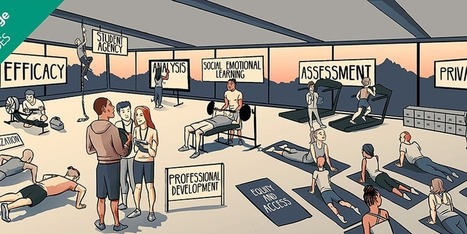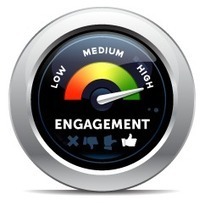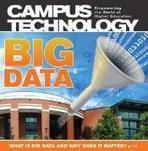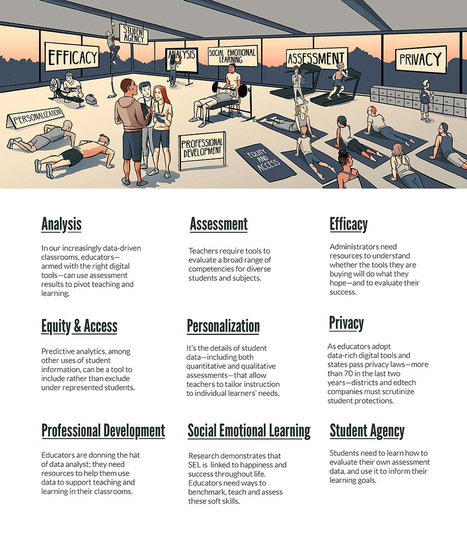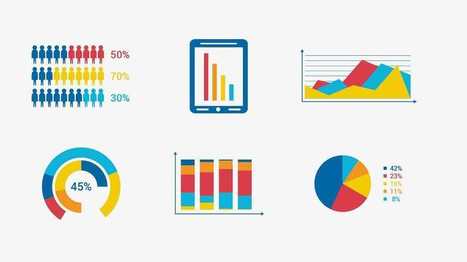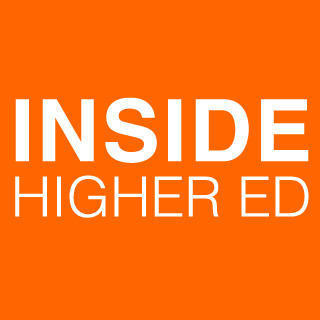 Your new post is loading...
 Your new post is loading...

|
Scooped by
Peter Mellow
February 2, 2023 11:32 AM
|
Effective visual representations can help higher education bridge silos and unleash the power of data.

|
Scooped by
Peter Mellow
July 27, 2017 3:57 PM
|
If you think data—in education, or any field—is cut and dry, think again. Working with data in the classroom, especially, can be either exhausting o

|
Rescooped by
Peter Mellow
from Learning with MOOCs
September 15, 2016 9:07 PM
|
Four years after the launch of edX, the data generated by massive open online courses still mystifies many institutions. Could inter-university collaboration unlock the secrets to better course delivery?

|
Rescooped by
Peter Mellow
from disruptive technolgies
June 15, 2016 7:39 AM
|
"Learning Analytics is the measurement, collection, analysis and reporting of data about learners and their contexts, for purposes of understanding and optimizing learning and the environments in which it occurs."
Via Beth Dichter, Pauline Farrell

|
Scooped by
Peter Mellow
April 25, 2016 8:40 PM
|
Schools and universities pump lots of time and money into collecting data on learning analytics, but there is no research to show that such data actually helps to improve learning outcomes.

|
Scooped by
Peter Mellow
April 5, 2016 5:35 PM
|
Data visualization expert Stephen Few said, “Numbers have an important story to tell. They rely on you to give them a clear and convincing voice.” With the influx of data and introduction of self-service analytics tools, we're going to need more people capable of communicating insights effectively. The next generation of data storytellers will not be limited to just analysts and data scientists. Everyone will need to know how to tell a story with numbers.

|
Scooped by
Peter Mellow
March 15, 2016 4:46 PM
|
The American Council on Education’s (ACE) Center for Policy Research and Strategy (CPRS) released a new report with support from TIAA Institute, “Evolving Higher Education Business Models: Leading with Data to Deliver Results.”

|
Scooped by
Peter Mellow
February 25, 2016 3:38 PM
|
Three higher ed chief data officers discuss the state of analytics at their institutions.

|
Scooped by
Peter Mellow
December 15, 2015 7:46 PM
|
Content mining of archival materials can make for amazing discoveries. Here's how to prepare for the coming influx of researchers who will want access to digital archives as a data source.

|
Scooped by
Peter Mellow
August 31, 2014 9:09 PM
|
Designing a textbook or lecture with the average student in mind may sound logical. But L. Todd Rose, who teaches educational neuroscience at Harvard University’s Graduate School of Education, argues that doing so means that the lesson is designed for nobody.

|
Scooped by
Kim Flintoff
November 28, 2012 1:34 AM
|
Although states are doing a masterful job of accumulating data and integrating data sources to support education improvement, according to a new report, the next part of the job may be their toughest yet: teaching people how to use the data.

|
Scooped by
Peter Mellow
July 23, 2012 7:45 AM
|
Netflix meets Google meets academia. Data mining is reshaping the college experience.
|

|
Scooped by
Peter Mellow
June 26, 2018 12:43 AM
|
The higher education community must set the table and invite others to help us define ethical practice and responsible use of student data in the rapi

|
Scooped by
Peter Mellow
November 16, 2016 8:15 PM
|
If you think data—in education, or any field—is cut and dry, think again. Working with data in the classroom, especially, can be either exhausting or exhilarating—depending on your fitness level. Data can be big, but also quite small. It’s often quantitative, but is increasingly qualitative. It’s pr

|
Scooped by
Peter Mellow
September 7, 2016 5:10 PM
|
In short, we want educational predictions to be wrong. If our predictive model can tell that a student is going to fail, we want that to be true only in the absence of intervention. If the student does in fact fail, that should be seen as a failure of the system. A predictive model should be part of a prediction-and-response system that (1) makes predictions that would be accurate in the absence of a response and (2) enables a response that renders the prediction incorrect (e.g., to accurately predict that, given a specific intervention, the student will succeed). In a good prediction-and-response system, all predictions would ultimately be negatively biased. The best way to empirically demonstrate this is to exploit random variation in the assignment of the system—for example, random assignment of the prediction-and-response system to some students but not all. This approach is rarely used in residential higher education but is newly enabled by digital data.The grand challenge in data-intensive research and analysis in higher education is to find the means to extract knowledge from the extremely rich data sets being generated today and to distill this into usable information for students, instructors, and the public.

|
Scooped by
Peter Mellow
May 5, 2016 6:08 PM
|

|
Scooped by
Peter Mellow
April 5, 2016 5:49 PM
|
Jenny Rankin in her TEDxTUM Talk on Education Data puts forward various examples on how heroes effectively used data to communicate various messages..

|
Rescooped by
Peter Mellow
from Educational Leadership
March 29, 2016 4:08 PM
|
U of California at San Diego's new early warning system aims to condense millions of data points into a simple metric showing whether students will graduate on time.

|
Scooped by
Peter Mellow
March 8, 2016 3:55 PM
|
Researchers can now access de-identified learning data from more than 230 massive open online courses (MOOCs) hosted on Instructure's Canvas Network.

|
Scooped by
Kim Flintoff
February 18, 2016 7:57 PM
|
We spoke with dozens of educators across a range of schools—from mainstream to technology-forward—and we conducted an online survey with a nationally representative sample of 4,600 public school teachers.
This study explores four questions:
• What do teachers believe about data-driven instruction and the tools that support it?
• How do teachers use data to tailor instruction?
• What are key challenges with the tools that support data-driven instruction?
• What do teachers need to make data work to inform instruction in the classroom?

|
Scooped by
Kim Flintoff
December 2, 2015 6:39 PM
|
This fall, Oral Roberts University (OK) issued Fitbits to on-campus students and Garmin vivofits to online students — part of the "whole person" philosophy at the Tulsa-based institution that urges students to be "well prepared" physically. The data generated by those activity trackers on movement, heart rate and sleep patterns drizzles automatically into the university's D2L gradebook in time for settling up midterm grades and finals. The results are displayed through D2L for faculty and students, just as if they were weekly quiz grades. The Garmin device, added CIO Mike Mathews, syncs with an online service that allows students to set goals and share progress with others.
Eventually, the campus will use the analytics to find out whether tracking the fitness data and making it visible gets students to move their bodies more, which is the goal, after all.

|
Scooped by
Peter Mellow
June 10, 2014 9:23 PM
|
Massive open online course providers are collecting troves of data about their students, but what good is it if researchers can't use the information?
The MOOC Research Initiative formally released its results on Monday, six months after researchers met in Arlington, Texas, to brief one another on initial findings. The body of research -- 22 projects examining everything from how social networks form in MOOCs to how the courses can be used for remedial education -- can perhaps best be described as the first chapter of MOOC research, confirming some widely held beliefs about the medium while casting doubt on others.

|
Scooped by
Peter Mellow
February 4, 2013 3:08 PM
|

|
Scooped by
Kim Flintoff
November 8, 2012 10:47 PM
|
Denver — Data mining is creeping into every aspect of student life—classrooms, advising, socializing. Now it’s hitting textbooks, too. CourseSmart, which sells digital versions of textbooks by big publishers, announced on Wednesday a new tool to help professors and others measure students’ engagement with electronic course materials. When students use print textbooks, professors can’t track their reading. But as learning shifts online, everything students do in digital spaces can be monitored, including the intimate details of their reading habits. KF: See ryanbretag's comments on this at: http://wp.me/pXQaZ-Wt
|
 Your new post is loading...
Your new post is loading...
 Your new post is loading...
Your new post is loading...










